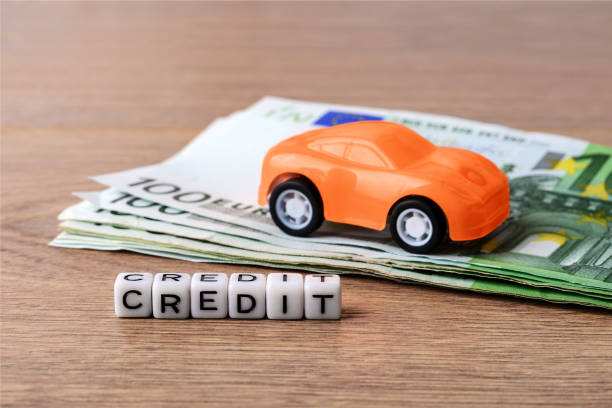
Affordable Car Insurance for Bad Credit Proven Tips to Save Money Fast 2025
Finding affordable car insurance for bad credit when you have bad credit can seem like an uphill battle. However, with the right strategies, it’s entirely possible to secure a policy that doesn’t break the bank.
In this guide, we’ll walk you through actionable tips to find cheap car insurance, even with a low credit score, while ensuring you stay adequately covered. Let’s dive in.

Why Does Bad Credit Impact Car Insurance Rates?
Your credit score plays a significant role in determining car insurance premiums in most states. Insurers often use credit-based insurance scores to assess the likelihood of filing claims. Here’s why:
- Higher Perceived Risk: A low credit score may signal financial instability, which some insurers associate with higher claims risk.
- Statistical Correlation: Studies show that drivers with poor credit are statistically more likely to file claims, prompting insurers to charge higher rates.
States Where Credit Scores Don’t Affect Rates: In California, Hawaii, Massachusetts, and Michigan, insurers cannot use credit scores to determine car insurance premiums. If you live in one of these states, you can focus solely on other factors, like your driving record and vehicle type.

Proven Tips to Save Money on Car Insurance with Bad Credit
1. Shop Around for Multiple Quotes
Never settle for the first quote you receive. Different insurance companies assess risk differently, and rates can vary widely.
- How to Do It: Use online comparison tools to gather quotes from at least 3-5 insurers. Look for companies specializing in high-risk or bad-credit drivers.
- Tip: Focus on both price and coverage. The cheapest policy isn’t always the best if it lacks essential protections.
2. Look for Discounts
Many insurance providers offer discounts that can help offset higher premiums caused by bad credit.
- Common Discounts:
- Bundling auto and home insurance.
- Enrolling in paperless billing or automatic payments.
- Completing a defensive driving course.
- Maintaining a clean driving record.
- Tip: Ask your insurer about less-advertised discounts—sometimes, simply asking can uncover savings opportunities.
3. Opt for a Higher Deductible
A higher deductible can lower your monthly premium, but it means paying more out-of-pocket in the event of a claim.
- Example: Increasing your deductible from $500 to $1,000 could save you up to 20% on premiums.
- Tip: Make sure you have enough savings to cover the deductible in case of an accident.
4. Consider Usage-Based or Pay-Per-Mile Insurance
If you’re a low-mileage driver, usage-based insurance programs could save you money. These plans track your driving habits using a device or app and reward safe, low-mileage driving.
- Providers: Companies like Progressive (Snapshot) and Allstate (Drivewise) offer such programs.
- Tip: Ensure the tracking doesn’t invade your privacy if that’s a concern.
5. Improve Your Credit Score Over Time
While improving your credit score takes time, the benefits extend beyond cheaper car insurance.
- Steps to Boost Your Credit:
- Pay bills on time.
- Keep credit card balances below 30% of your limit.
- Check your credit report for errors and dispute inaccuracies.
- Avoid opening multiple new credit accounts.
- Tip: Even small improvements in your credit score can lead to noticeable reductions in premiums.
6. Work with Non-Standard Insurance Providers
Some companies specialize in providing coverage to high-risk drivers, including those with bad credit.
- Examples: Companies like Dairyland and The General often cater to drivers with unique circumstances.
- Tip: These providers may offer policies without credit checks, but rates might still be higher than standard insurers.

What Factors Do Insurers Consider Besides Credit Scores?
Even with bad credit, you can influence your car insurance rates by improving other factors insurers consider:
- Driving Record: A clean driving record can significantly reduce premiums.
- Vehicle Type: Cars with advanced safety features or lower repair costs often cost less to insure.
- Location: Urban areas typically have higher rates due to increased risk of theft or accidents.
- Coverage Level: Liability-only policies are cheaper but may leave you financially exposed.
- Age and Gender: Younger and male drivers may face higher premiums.

How to Balance Affordability and Coverage
1. Don’t Skimp on Essential Coverage
While it’s tempting to cut costs by reducing coverage, this can leave you vulnerable. Always ensure you meet state minimum requirements and consider additional coverage for financial protection.
2. Raise Your Deductible Strategically
Opting for a higher deductible can reduce your premiums without sacrificing essential coverage. Just make sure you have savings to cover the deductible if needed.
3. Regularly Review Your Policy
Insurance isn’t “set it and forget it.” Review your policy every 6-12 months to ensure you’re getting the best deal.
Conclusion
Finding Affordable Car Insurance for Bad Credit is challenging but achievable. By shopping around, leveraging discounts, improving your credit score, and choosing the right coverage, you can lower your premiums without sacrificing protection. Start comparing quotes today, and don’t let bad credit stand in the way of securing reliable, affordable car insurance.
FAQs
Which car insurance company is most forgiving of bad credit?
Companies like GEICO, Progressive, and Nationwide are often more lenient toward drivers with bad credit. They focus more on driving history and offer discounts to offset higher premiums.
How much more expensive is car insurance with bad credit?
Car insurance with bad credit can cost 20% to 50% more than normal rates, depending on your location and insurer. Shopping around and leveraging discounts can significantly lower your costs.
Can you avoid credit checks for car insurance?
Yes, some insurers like Dairyland or non-standard providers don’t rely on credit scores for pricing. You can also explore usage-based insurance options or pay-per-mile policies.


